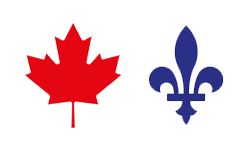You have accumulated too much debt and you can’t see any way to get away? You repeatedly receive calls from your creditors? Personal bankruptcy may be your best option to solve your financial problems.
Why go bankrupt?
- Bankruptcy eliminates all your debts*. You won’t have to pay your creditors anymore.
- Your property and your wages can no longer be seized. Your creditors have to stop harassing you.
- You can keep your furniture and, in most cases, your home and car.
- You are protected against utilities cut-offs: electricity, telephone, etc.
* The criminal fines, child support alimony and student loans under 7 years are not dischargeable by bankruptcy.
Who can go bankrupt?
To declare personal bankruptcy, the Bankruptcy and Insolvency Act requires that you have at least $1,000 in debt and you are unable to repay.
How to go bankrupt?
In Canada and Quebec, you must meet with a bankruptcy trustee to go bankrupt. The trustee works for you: he ensures that your rights are respected.
How much does a bankruptcy cost?
The government prescribes the fee for a bankruptcy. You will have to make monthly payments to your trustee who will handle the distribution to creditors. In most cases, payments are $150 to $200 per month for 9 months.
What happens during a bankruptcy?
1. Preliminary Meeting
At the first meeting (without charge or obligation), a counselor will take the time to listen to you and explain your options. Bankruptcy is not always the only solution.
2. Declaration of Bankruptcy
With the assistance of your trustee, a bankruptcy will be filed with the Superintendent of Bankruptcy. From that moment, you will be protected by the Bankruptcy and Insolvency Act.
3. Meeting of Creditors (optional)
In some rare cases, a meeting with your trustee and your creditors is necessary.
4. Two Consultations
You will get two consultations with your bankruptcy trustee who will give you tips related to financial management and healthy consumption habits.
5. Release
After 9 months (21 months if a part of your wages can be garnished), you are automatically released from your debts and your bankruptcy ends. In exceptional cases, you must appear at a hearing that will determine the conditions of your release. Consult an advisor for more information.



